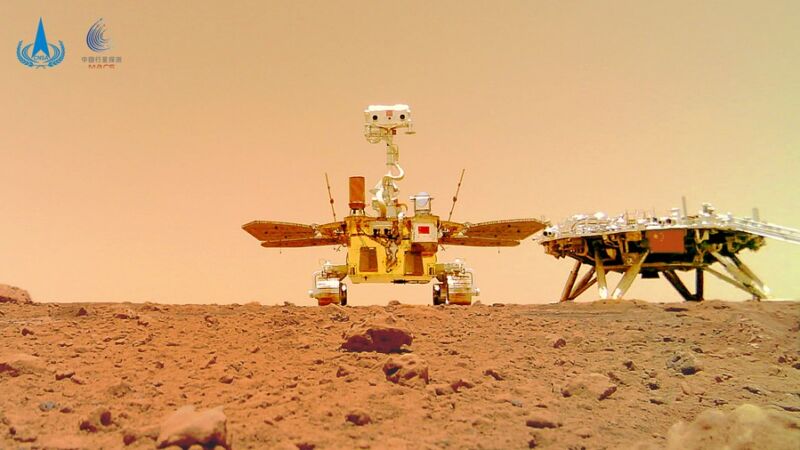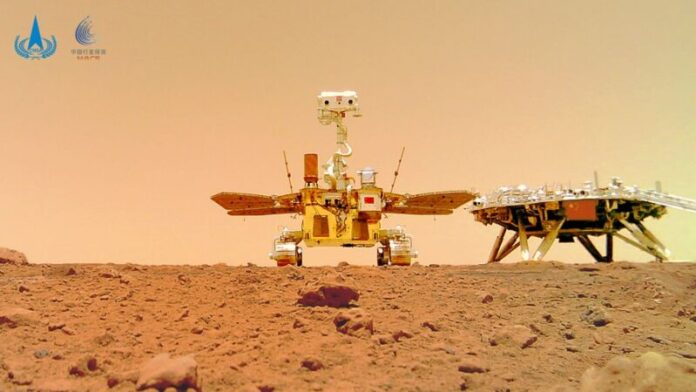
Enlarge / A "selfie" photo of China's Zhurong rover and the Tianwen-1 landing platform on Mars in 2021. (credit: China National Space Administration)
China plans to launch two heavy-lift Long March 5 rockets with elements of the Tianwen-3 Mars sample return mission in 2028, the mission's chief designer said Thursday.
In a presentation at a Chinese space exploration conference, the chief designer of China's robotic Mars sample return project described the mission's high-level design and outlined how the mission will collect samples from the Martian surface. Reports from the talk published on Chinese social media and by state-run news agencies were short on technical details and did not discuss any of the preparations for the mission.
Public pronouncements by Chinese officials on future space missions typically come true, but China is embarking on challenging efforts to explore the Moon and Mars. China aims to land astronauts on the lunar surface by 2030 in a step toward eventually building a Moon base called the International Lunar Research Station.
Read 12 remaining paragraphs | Comments
Ars Technica - All contentContinue reading/original-link]




